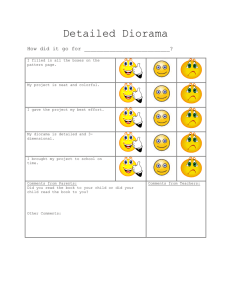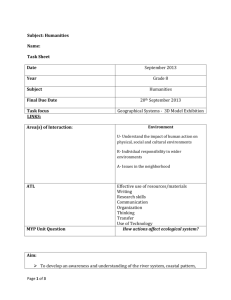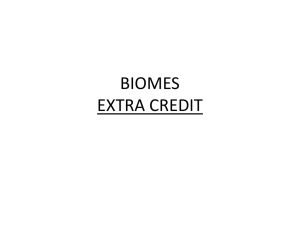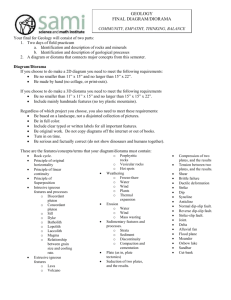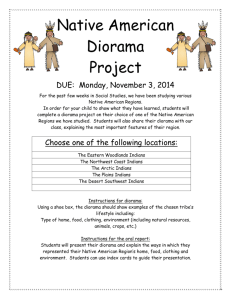Peabody Museum visit activity sheet for New England dioramas
advertisement
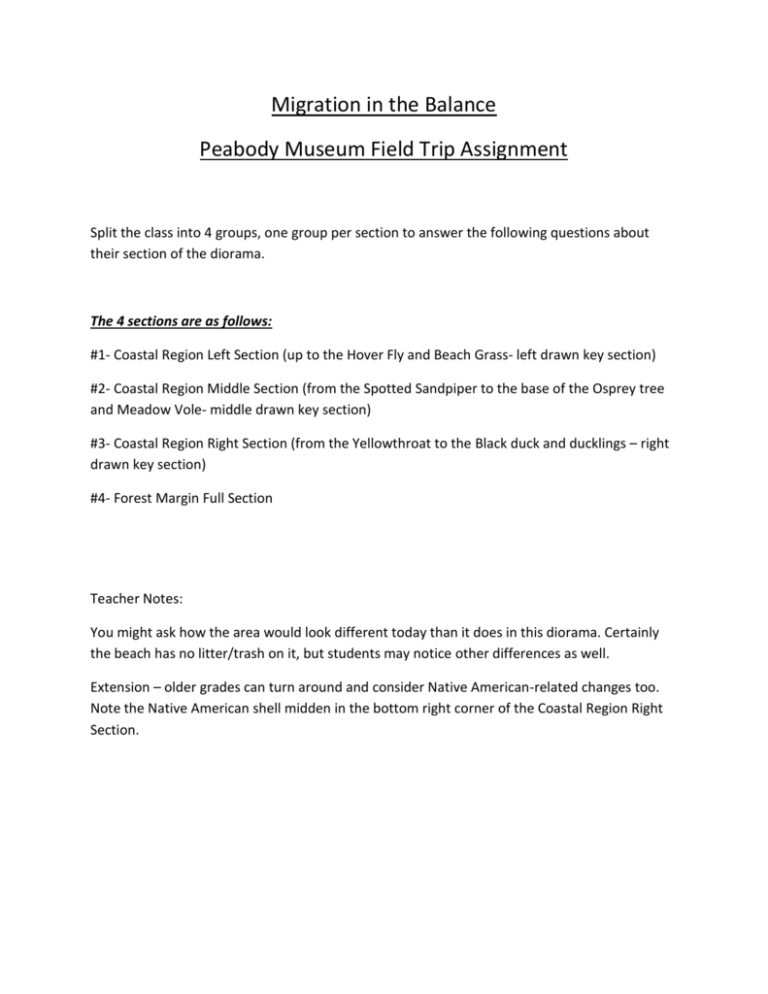
Migration in the Balance Peabody Museum Field Trip Assignment Split the class into 4 groups, one group per section to answer the following questions about their section of the diorama. The 4 sections are as follows: #1- Coastal Region Left Section (up to the Hover Fly and Beach Grass- left drawn key section) #2- Coastal Region Middle Section (from the Spotted Sandpiper to the base of the Osprey tree and Meadow Vole- middle drawn key section) #3- Coastal Region Right Section (from the Yellowthroat to the Black duck and ducklings – right drawn key section) #4- Forest Margin Full Section Teacher Notes: You might ask how the area would look different today than it does in this diorama. Certainly the beach has no litter/trash on it, but students may notice other differences as well. Extension – older grades can turn around and consider Native American-related changes too. Note the Native American shell midden in the bottom right corner of the Coastal Region Right Section. Name:______________________________________ Date:_________________ Peabody Museum Assignment: Diorama Section #____________ 1. List 5 biotic factors that you see. Biotic factors are living organisms, including dead organisms that were once alive. a. b. c. d. e. 2. List 3 abiotic factors that you see. Abiotic factors are non-living parts of an ecosystem, things that were never alive. a. b. c. 3. Describe one part of the habitat that was changed from its natural state by humans: 4. Pick one animal and discuss how this human-caused change would affect that animal. 5. How could this change affect migratory animals passing through this area?
